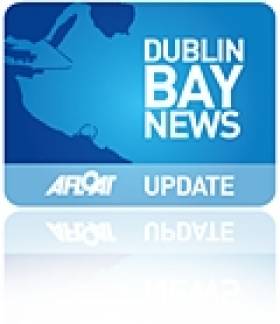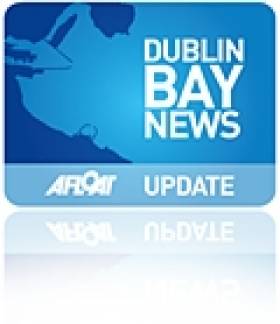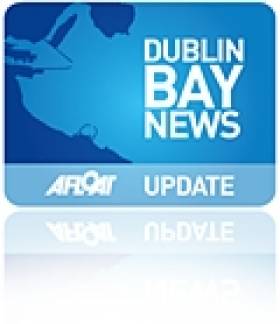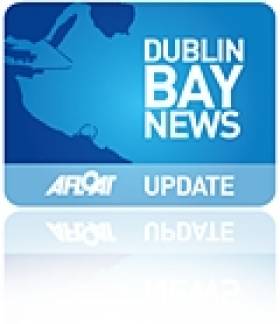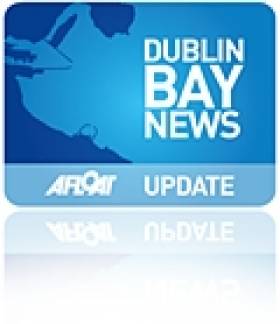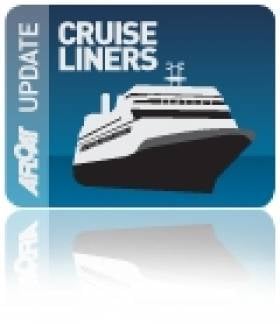Displaying items by tag: Dun Laoghaire Harbour Company
Hollywood Favourites Return to Dun Laoghaire Harbour Cinema for Autumn Screenings
#dunlaoghaireharbour – Dún Laoghaire Harbour Company in partnership with Underground Cinema have today (23.09.14) launched the return of the Drive-in movies to Dun Laoghaire Harbour this autumn. The Drive-in is located inside the standage area of the Ferry Terminal at Dún Laoghaire Harbour.
Hollywood favourite 'Raiders of the Lost Ark' will kick off the screenings on Saturday (27.09.14) at 7.15pm followed by classic rom-com 'Dirty Dancing' at 10.15pm. There will be a further forty-six screenings over the course of the autumn leading right up to 8th December.
Highlights include:
- Inception, 18th October at 10pm
- World War Z, 28th October at 7pm
- Anchorman, 8th November at 6.45pm
- Elf, 5th December at 4.30pm
- Django Unchained, 8th December at 9.30pm
Tickets can be booked online at www.underground-cinema.com/drive-in-movies or at the Drive-in on the day, and each screening will take up to 80 cars. A total of 20 pedestrian tickets are also available for each screening. On arrival, audience members check in at the Drive-in and will have the opportunity to order snacks including pizza from Dún Laoghaire pizzeria 'Bits and Pizzas'. Staff will then direct cars to their parking location where the audience can tune into the radio frequency displayed on the screen.
Commenting today, Tim Ryan, Operations Manager at Dún Laoghaire Harbour Company said: "One of our key responsibilities in Dún Laoghaire Harbour Company is to maintain and enhance the recreational value of the Harbour. The drive-in cinema was a huge success over the St. Patrick's bank holiday weekend and bringing it back to the Harbour has been an exciting undertaking for us. It will undoubtedly deliver some spin-off benefits to the town. The Harbour has such potential as a tourism destination and we anticipate a great level of activity over the course of the autumn."
See below for the full programme of film screenings.
27th September at 7.45pm Raiders of the Lost Ark
27th September at 10.15pm Dirty Dancing
28th September at 7.45pm American Graffiti
28th September at 10.15pm Inglorious Basterds
18th October at 7pm Avengers Assemble
18th October at 10pm Inception
19th October at 7pm National Lampoons Animal House
19th October at 9.30pm Avatar
27th October at 7pm Silence of the Lambs
27th October at 9.30pm The Thing
28th October at 7pm World War Z
28th October at 9.30pm Aliens
29th October at 7pm The Crow
29th October at 9.15pm The Evil Dead II
30th October at 7pm Psycho
30th October at 9.15pm Dracula
31st October at 5pm Monster House
31st October at 7pm The Rocky Horror Picture Show
31st October at 9.15pm The Exorcist
1st November at 7pm Star Trek
1st November at 9.45pm The Dark Knight
2nd November at 7pm Star Trek: Into Darkness
8th November at 6.45pm Anchorman
8th November at 9pm Titanic
9th November at 7pm Predator
9th November at 9.30pm Gladiator
15th November at 7pm The French Connection
15th November at 9.30pm Goodfellas
16th November at 7pm Taxi Driver
16th November at 9.30pm Dog Day Afternoon
29th November at 7pm This is Spinal Tap
29th November at 9pm Boogie Nights
30th November at 7pm Die Hard
30th November at 9.30pm Gravity
5th December at 4.30pm Elf
5th December at 7pm Goldfinger
5th December at 9.30pm Skyfall
6th December at 4.30pm A Christmas Carol
6th December at 6.45pm Enter the Dragon
6th December at 9pm Lord of the Rings: Return of the King
7th December at 4.45pm The Goonies
7th December at 7.15pm Back to the Future
7th December at 9.45pm The Godfather
8th December at 4.30pm Arthur Christmas
8th December at 6.45pm Jaws
8th December at 9.30pm Django Unchained
#dlharbour – The Minister for Transport, Tourism and Sport, Leo Varadkar TD, has announced the appointment of Don McManus to the Board of Dun Laoghaire Harbour Company.
Don McManus – who is Chairperson of Dun Laoghaire Business Improvement District (BID) – has previously served terms on the board of the Harbour Company. Don is from Dun Laoghaire, and is Managing Director of his family-owned business which has operated in Dun Laoghaire since 1928.
The Board of Dún Laoghaire Harbour Company now comprises eight members, which is the maximum membership it can have.
Speaking on the appointments, Chairperson of Dún Laoghaire Harbour Company, Eithne Scott Lennon said: "Don's experience and commitment to improving the Dun Laoghaire is very important, and will be very valuable to the Harbour Company as we continue to expedite the elements of our development plan."
The development plan include the delivery of an International Diaspora Centre, a deep cruise berth facility and a new mixed use housing and retail development. A number of initiatives to add to the leisure offerings at the Harbour have already been instigated, including the Urban Beach project, the Shackleton Exhibition and the new drive-in movie initiative which will commence later this month. A key area of development for the Harbour Company has been the increase in cruise-calls to Dún Laoghaire in recent years, and we expect to deliver 100,000 leisure visitors and crew to Dún Laoghaire and its hinterland in 2015.
Dun Laoghaire Harbour Unveils Summer Programme
#dlharbour – Dun Laoghaire Harbour Company announced its summer activity programme on the East Pier this morning. The summer programme will comprise a number of cruise calls, sporting events, as well as family-fun activities which will commence in early-June and run until the end of the summer. The Harbour Company is also increasing the range of concessions offering treats such as ice cream, frozen yogurt and fruit.
Key dates in the summer programme will include:
Water sport: ICRA Cruiser Championship (13th – 15th June) and The European Optimist Championships (11th – 20th July).
Cruise visits: Following the arrival of our first cruise of the season in April, there will be three more cruise calls this summer: the Wind Surf will visit on 12th July and again on 4th September. The luxury Seaborne Legend will visit on 31st August.
Races: Among the sporting competitions will be annual 'Harbour Swim' on 10th August, and the return of the very popular Rainbow Run on 22nd June.
A fun fair will return to the Carlisle Pier in late June, and the kiddies' Pirates Cove miniature electric train service – that will operate up and down the East Pier – will operate throughout the summer months.
Finally, if you are coming down to the pier this summer there are some great options for food and treats! The famous Teddy's Ice Cream will be available at the start and end of the pier, Mooch Frozen Yogurt is available beside the bandstand, and Ouzo's Fish Shack will be cooking up beautiful seafood that you can enjoy before or after your stroll on the Pier.
Speaking at today's launch, JP Montgomery from Dun Laoghaire Harbour Company said: "The Harbour is a wonderful amenity and our summer programme is designed to encourage more people to use it. Increased activity at the harbour – whether to cruise calls, or simply greater numbers coming to walk the Pier – can have significant economic benefits for the wider town."
#dlharbour – Gerry Dunne, Chief Executive of Dún Laoghaire Harbour Company responds to WM Nixon's article Has Dún Laoghaire Lost the Plot?
Mr. Nixon and the Harbour Company share one thing in common – a passion for Dún Laoghaire Harbour. It is a unique amenity for the people of Dún Laoghaire, for the City and County of Dublin and for the nation. Since its construction almost 200 years ago, it has served and continues to serve an evolving community of interests. First came the ferry boats and freighters, followed by the railway. Then came the sailors and the yacht clubs. Various businesses have come and gone. And at all times, the people have come.
Sustainable development
We in the Harbour Company have a vision for the sustainable development of Dún Laoghaire Harbour in conjunction with the revitalisation of the town. We have been working assiduously towards this objective. Minister Varadkar's Port Strategy of March 2013 puts it lucidly when it states that the long term future of the Harbour will be in terms of marine leisure, maritime tourism, cultural amenity and urban redevelopment.
It is against this backdrop that I address two points raised by W.M. Nixon regarding Masterplan proposals:
- the urban beach
- the new cruise berth.
Mr. Nixon's concerns regarding the urban beach are twofold – disruption during the construction phase and effect on access when constructed. On these issues, expert advice available to the Harbour Company indicates that there is likely to be very little disruption during construction. As for access, since this project was first proposed in the Masterplan, the design of the urban beach has been expressly modified in order to ensure there will be no access issues for members of the National Yacht Club and, most importantly, the RNLI.
Beating heart
The sailing community is, and will always remain, a key stakeholder in Dún Laoghaire Harbour. Sailing is the beating heart of Dún Laoghaire Harbour. As Mr Nixon knows, the Harbour Company works closely with the yacht clubs to attract major international sailing events to the harbour. It would frustrate our objectives if any of the proposed Masterplan developments were to make the harbour a less attractive location for sailing and sailors. In fact, a working group has been convened with the sailing community and the Harbour Company with the overall strategic objective of attracting major international sailing events and associated festivals to Dún Laoghaire.
This season (2014), swing moorings in the west Bight were eliminated and the swing moorings in the East Bight were reduced by 40% . This initiative was referenced in the Harbour Masterplan and implemented with the co-operation of the yacht clubs, with the objective of creating a substantial quantum of waterspace in the safe environment of the harbour for youth training and in-harbour sailing.
When preparing this article, I took time to read the newspaper reports from the 1990s about the then proposed marina and the many objections that were raised to its construction. One of the points raised in the the objections to the marina was the encroachment on in-harbour sailing and training and possible safety issues. Mention of the marina is instructive as it illustrates that a development that might originally have been viewed sceptically by some can turn out to be something that becomes much-loved and emblematic of the harbour.
The cruise business is a growing market sector in the tourism industry. Ireland has recently begun to capitalise on this market and has succeeded in attracting a growing number of visits by cruise liners. Dún Laoghaire has been important to attracting these cruise calls, and in 2015, over 100,000 passengers/crew will visit the town as part of their cruise tour. Interestingly, the number of cruise calls to Ireland represents a relatively small share of this potential market, and there is a clear opportunity to grow this business very significantly for the benefit of the Irish economy. The harbour offers stunning views of Dublin Bay, Killiney Hill, the town itself and, in the distance, the Dublin and Wicklow Mountains.
Many commentators agree that this location offers a far more attractive destination for cruise passengers than the industrial environment of Dublin Port.
Mr. Nixon questioned the economic benefit to the town of the leisure cruise business. Importantly, businesses in the town are enthusiastic supporters of this initiative, through the Dún Laoghaire Cruise Stakeholder Group. A detailed report, conducted by independent economic consultants in 2011, estimated that a new cruise facility would bring significant benefit to the area, with over 30% of the economic value of the cruise visits impacting directly on Dún Laoghaire.
The Dún Laoghaire Harbour Masterplan was adopted in October 2011 following an extensive consultation process with the public and key stakeholders. The Masterplan sets out a long-term vision for Dún Laoghaire Harbour. It seeks to realise the potential of the Harbour as a major marine, leisure, cultural and tourism destination, as well as securing its long-term economic viability. It does this in line with the Government's ports policy.It is in the implementation of this policy that Dún Laoghaire Harbour can be developed and reach its full potential as a leisure port facility. We have a wonderful asset, an unparalleled asset, an asset with a unique history. It is the opinion of many that it truly is one of the most beautiful man-made harbour in the world. It offers a striking blend of modern amenities, mixed with a traditional marine ambience.
One can be nostalgic for the time when the town with its harbour "was known as Kingstown and had its origins in the heights of gentility and middle class refinement". However, while seeking to preserve the unique character of the harbour that has made it such an attractive place to visit or in which to sail, Dún Laoghaire Harbour must adapt to survive. Sailing may be the beating heart of the harbour, but a heart does not beat by itself. There must be due regard for the needs of all harbour users including the general public. A core objective of the Masterplan is to increase public access to the waterfront.
Economic realities
There is a significant annual cost to the maintenance and development of a wonderful asset such as Dún Laoghaire Harbour. The stakeholders and the general public expect to see a harbour full of vitality, in pristine condition, with first class facilities and properly maintained. Dún Laoghaire Harbour Company works constantly to seek to meet these aspirations. What might not be well known is that the yacht clubs make only a very nominal contribution to the cost of continuous maintenance and repair work for this almost-200 year old man-made facility. As the Government has made it clear that it will provide no funds for maintenance or development of the harbour, the Company must rely on commercial opportunities to provide the resources necessary to ensure that the harbour meets the expectations of all users. Without commercial income, such as income from cruise calls, we would simply not be in a position to maintain the high standards which all harbour users have come to expect.
Cultural significance
Apart from the development of the proposed cruise facility and the urban beach, the Harbour Masterplan has identified other exciting plans, including the delivery of an International Diaspora Centre. The plans for this Centre take account of the historical significance of the harbour over almost two centuries in the movement of millions of migrants between Britain and Ireland. The proposed Centre will offer visitors from at home and abroad a world-class visitor experience and will have the potential to put Dún Laoghaire on the global map as a top visitor destination.
The Directors and staff of the Harbour Company take our role as custodians of the harbour very seriously. Our first responsibility is to make sure that the harbour is well run and economically viable. Our commitment must be to all those who use the harbour – sailors, yacht club members, anglers, ferry passengers, cruise passengers, tourists, local residents, occasional visitors, regular walkers and, not least, the general public.
The coming months and years represent a hugely exciting opportunity for the Harbour, and for the town of Dún Laoghaire. In embracing this opportunity, the Harbour Company will always remain cognisant of the history, heritage and potential of this wonderful place.
Dun Laoghaire Harbour to Compete for Disapora Centre
#dlharbour – Dún Laoghaire Harbour Company (DLHC) says it hopes to take part in a competition – operated by Failte Ireland – to create a national diaspora centre.
One of the key deliverables of the Harbour Company's master plan is the creation of a diaspora centre on the historic Carlisle Pier. Meanwhile, Fáilte Ireland – last week - issued a call for 'expressions of interest' in delivering a national diaspora centre.
According to the CEO of Dún Laoghaire Harbour Company, Gerry Dunne, "The Fáilte Ireland call for expressions of interest in delivering a national diaspora centre comes at a good time for Dún Laoghaire. We are now at the point of having assembled all ideas for the centre, including a sustainability plan, so we are absolutely ready to take part in the competition to deliver a national diaspora centre.
"In the event that Dún Laoghaire is selected by Fáilte Ireland, we would be in a position to market the Dún Laoghaire diaspora centre as the 'national centre' and this would obviously assist in marketing at a global level."
Gerry Dunne was speaking at a lunchtime seminar today which was organised by DLHC on the issue of diaspora policy. The key issues arising from the seminar will be used to inform the Habour Company's submission to the Department of Foreign Affairs public consultation on diaspora policy, which runs until 23rd April.
"The Harbour Company is acutely aware of the role which the Harbour in Dún Laoghaire played in the lives of so many of our diaspora. Indeed, we were reminded of this at numerous points during last week's State visit by the President to England.
"We intend to lean on our history; our research on diaspora that has been undertaken to inform the planned diaspora centre; and the lessons from the Global Diaspora Forum - which we hosted last year in conjunction with the US State Department - to inform our submission to the Government's consultation on diaspora policy. In addition, the contributions at today's seminar will also help inform our submission," said Gerry Dunne.
Among those attending today's seminar in Dún Laoghaire was Labour Party MEP, Emer Costello, who has been a strong supporter of the planned diaspora centre at Dún Laoghaire. According to Ms Costello: "The past week – with the State visit to England – was a watershed in Anglo-Irish relations. There was a strong acknowledgement of our shared history, but there was also huge expectation about our future relationship. But, throughout all of last week, I could not help thinking that among those for whom this visit had the greatest import were the diaspora. Those women and men who left these shores in search of work. From the unskilled labourers and house maids to the highly-educated professionals.
"Their story is a story shared by Irish diaspora in the four corners of the world. Some excelled and exceeded levels of achievement that they might never had the opportunity of doing, had they not taken the boat. Others, were less fortunate. But ultimately, the Irish abroad – our diaspora – are strong and numerous, and want to be connected. We need them to be connected. It's a globalised society and they are one of our strongest assets if we're to be effective in business, education and development.
"It gives me great pleasure therefore to be here today, as part of this discussion on Dún Laoghaire Harbour Company's submission to the consultation by the Department of Foreign Affairs and Trade on diaspora. From the day I was briefed about plans to create a diaspora centre on the harbour here, I have been a supporter. I believe the plans by the Harbour Company have capacity to deliver the connection to our diaspora abroad, as well as to tact as an education and leisure amenity for everyone: Irish people, new Irish and those from across the globe with an interest in diaspora," she added.
#CruiseLiners - Minister for Transport, Leo Varadkar TD has appointed three new members to the Board of Dún Laoghaire Harbour Company.
The appointments which come into effect last week include:
Mark Finan who is a barrister-at-law with particular expertise in regulatory compliance, European and international law. He lives in Monkstown, Co Dublin.
Justin McKenna who is a solicitor at the Dún Laoghaire-based solicitor practice, Partners at Law.
James Jordan is a retired SIPTU trade union official and continues to be a community activist in the Dún Laoghaire area. He lives in Glenagaery, Co Dublin.
The Board of Dún Laoghaire Harbour Company now comprises eight members, which is the maximum membership it can have.
Speaking on the appointments, the first female Chairperson of Dún Laoghaire Harbour Company, Eithne Scott Lennon said: "The appointment of three additional members to the Board of the Harbour Company by the Minister for Transport, Tourism and Sport, Leo Varadkar, gives us greater strength as we move into one of the most active development phases in the Harbour's history.
"Following on from the Harbour Company's development plan, we are now embarking on the execution of some major infrastructural projects which will – I believe – position Dún Laoghaire as the primary leisure port facility in Ireland."
Plans include the delivery of an International Diaspora Centre on the historic Carlisle Pier, a deep cruise berth facility and a new mixed use housing and retail development.
A number of initiatives to add to the leisure offerings at the Harbour have already been instigated, including the Urban Beach project, the Shackleton Exhibition and the new drive-in movie initiative which commenced on St. Patrick's Weekend.
A key area of development for the Harbour Company has been the increase in cruise-calls to Dún Laoghaire in recent years, and we expect to deliver 100,000 leisure visitors and crew to Dún Laoghaire and its hinterland in 2015
Cruise Passenger Numbers Visiting Ireland Could Quadruple Over Next Decade
#CruiseLiners - Cruise passenger numbers visiting Ireland could quadruple over the next decade if the right facilities are in place, an Oireachtas Joint Committee has heard.
Chairwoman designate of the Dún Laoghaire Harbour Company, Eithne Scott Lennon said the south Dublin port was a suitable location to develop a facility to cater for large, "next generation" cruise ships.
"With our unique setting and recent categorisation as a leisure port in the Government's port policy, I strongly believe that Dún Laoghaire harbour offers the most suitable home for a cruise facility," she told members of the Oireachtas Joint Committee on Transport and Communications.
For more on this story, The Irish Times has a report
Dun Laoghaire Harbour Company to Get New Chairman
#dlhc – During priority questions in the Dail on Thursday, Minister for Transport Leo Varadkar confirmed the imminent appointment of a new chairman for Dun Laoghaire Harbour Company (DLHC), the state company in charge of Ireland's largest marine leisure port.
The Minister explained how the running of the state company will be transferred in to Dun Laoghaire Rathdown County Council, as recently outlined in the national ports plan.
The Government response came after questions were raised by local Dun Laoghaire TD, Richard Boyd Barrett.
DLHC has been successful this season in attracting cruise liner business to the town, including the visit of the Queen Mary II in May, a move that boosted interest in the 200–year old harbour and its future prospects in light of the DLHC's Harbour master plan launched two years ago.
Dun Laoghaire Makes Case Abroad For Diaspora Centre
#DunLaoghaire - Dun Laoghaire Harbour Company chief executive Gerry Dunne made the case for a diapora centre in the South Dublin port town at a gathering in the House of Lords in London recently.
The meeting was hosted by Baroness Detta O’Cathain, a member of the leadership council of the Irish International Diaspora Trust which is working to create a diaspora centre at Dún Laoghaire Harbour.
In an opinion piece published in The Irish Times a few weeks ago, Baroness O'Cathain wrote that "by supporting the creation of a disapora centre... we will be paying tribute to our ancestors."
The proposed Irish International Diaspora Centre forms part of the Masterplan for Dun Laoghaire Harbour, which will involve an investment of more than €230 million over the next 10-15 years.
The €50 million diaspora visitor centre envisaged for Carlisle Pier would celebrate the “origins, diversity and influence of the Irish at home and abroad” at a place where thousands of Irish people left for new lives in Britain and beyond in decades past.
Baroness O'Cathain said she was pleased that the Programme for Government "seeks to support the creation of a diaspora centre", adding that "we must pass on to this generation and to future generations the importance of the Irish DNA of the soul.
"The sense of belonging to a very precious country brightens our lives. This is what, in strong terms, the diaspora centre will do."
Last summer The Irish Times reported that Peter Whittaker of Martello Media was been appointed creative director of the Irish International Diaspora Centre development team.
Dun Laoghaire Sailors' Car Parking Fees Face Hike
#dunlaoghaire – The end of car park concession rates for Dun Laoghaire sailors could double charges for sailors using Harbour Company spaces convenient to the four yacht clubs for parking over the course of a day.
Dun Laoghaire Harbour Company has announced the discontinuation of concession parking permits for sailors and students wtih immediate effect but the new DLHC parking strategy also gives some of the 'cheapest parking' available according to DLHC operations manager Tim Ryan. See article with parking zones available for download as a pdf here.
Until now sailors could park in front of the waterfront yacht clubs in the town for a concession rate of €8 but from today parking in DLHC spaces at the Royal Irish YC, Royal St. George, National YC and Dun Laoghaire Motor YC is subject to a standard hourly minimum parking charge of €2. Car parking costs while enjoying a typical day's sailing of six or seven hours duration will more than double in parking spaces immediately outside the clubhouses. In these spaces parking is charged from 9am to 8pm giving a daily charge of €22 instead of the former €8 charge.
The Royal Irish YC has its own members parking area in front of its clubhouse.
DLHC say discounted parking will continue to be available from €8 per day on Carlisle Pier and the Underground Car Park and Dun Laoghaire Marina Car Park.
A rate of just €4 per day applies at West Pier/Old Harbour Car Parks.
Quarterly and annual parking permits advertised at €800 per annum and for use in designated areas are available for purchase from the Harbour Office (01 2801130) or online at www.dlharbour.ie.
Vehicles parked in areas other than the Designated Zones will be clamped unless displaying a valid parking ticket, the company says.


























